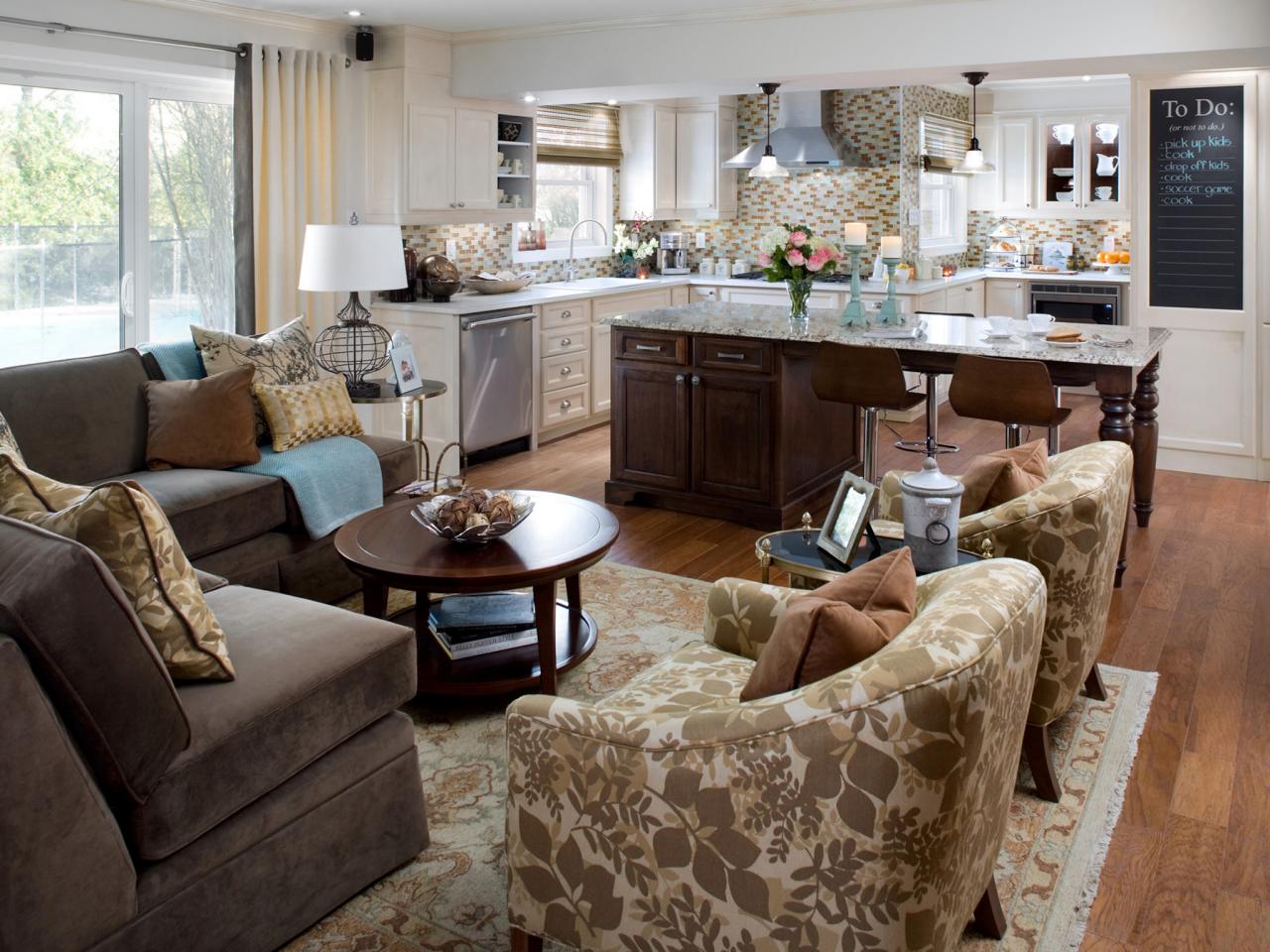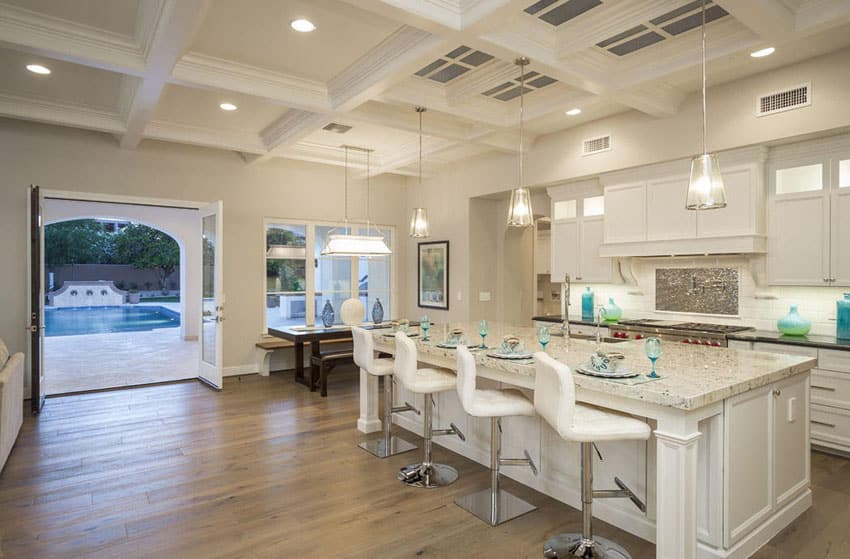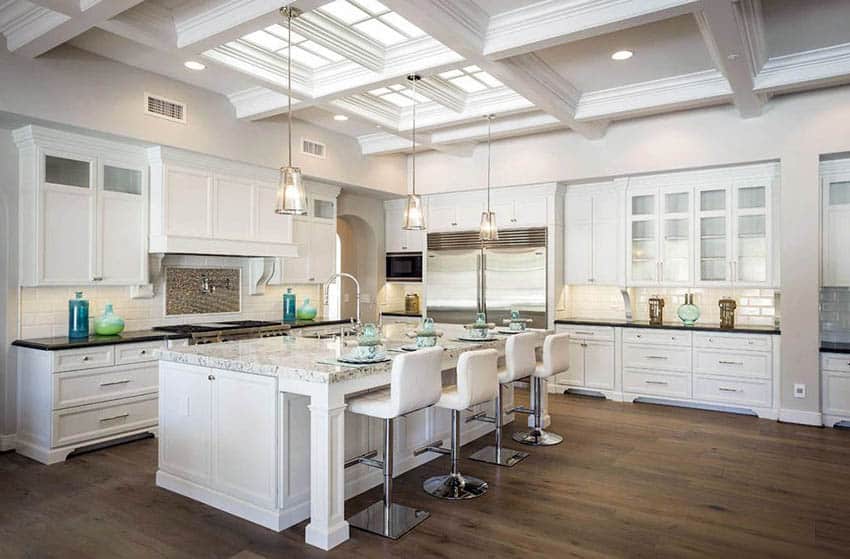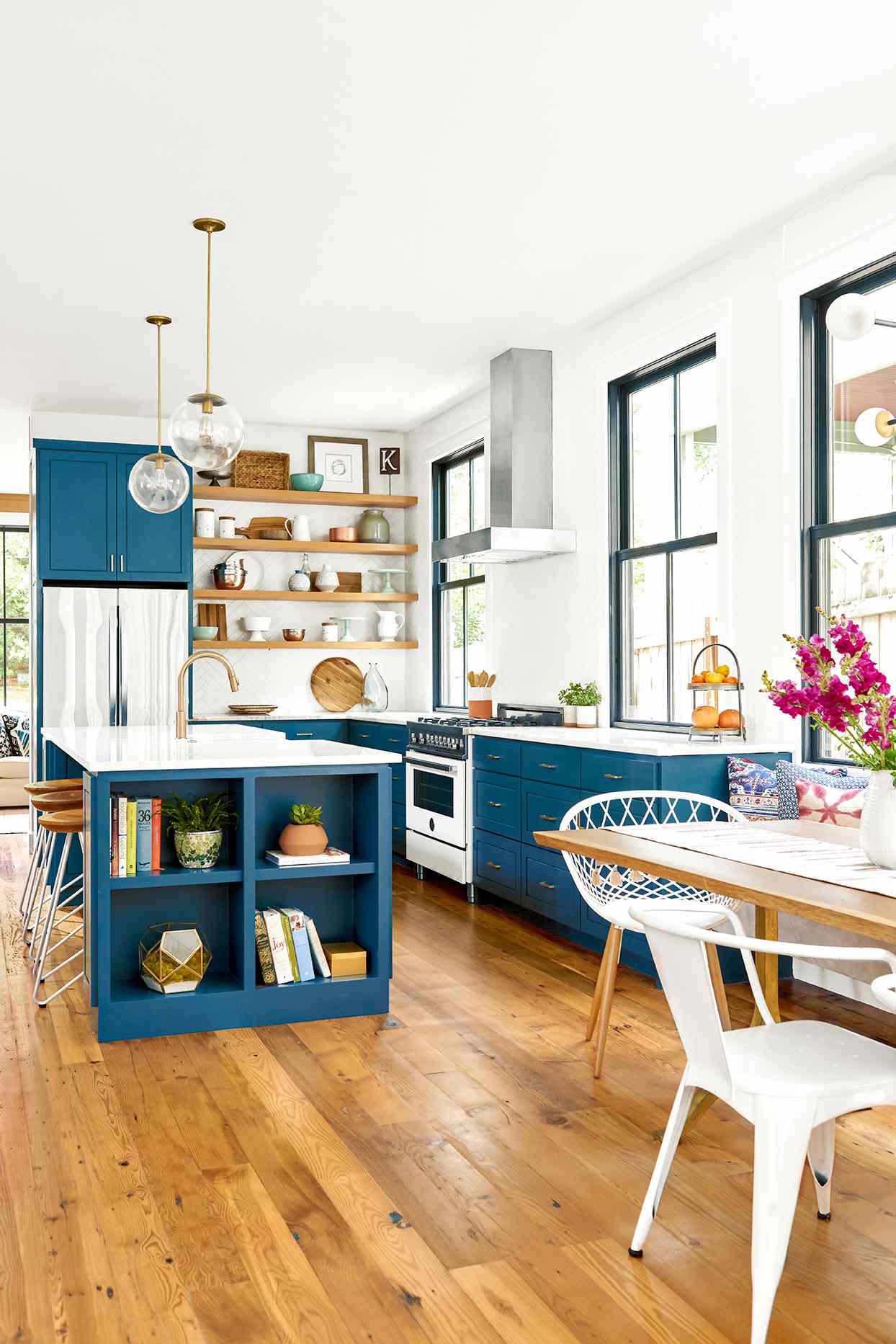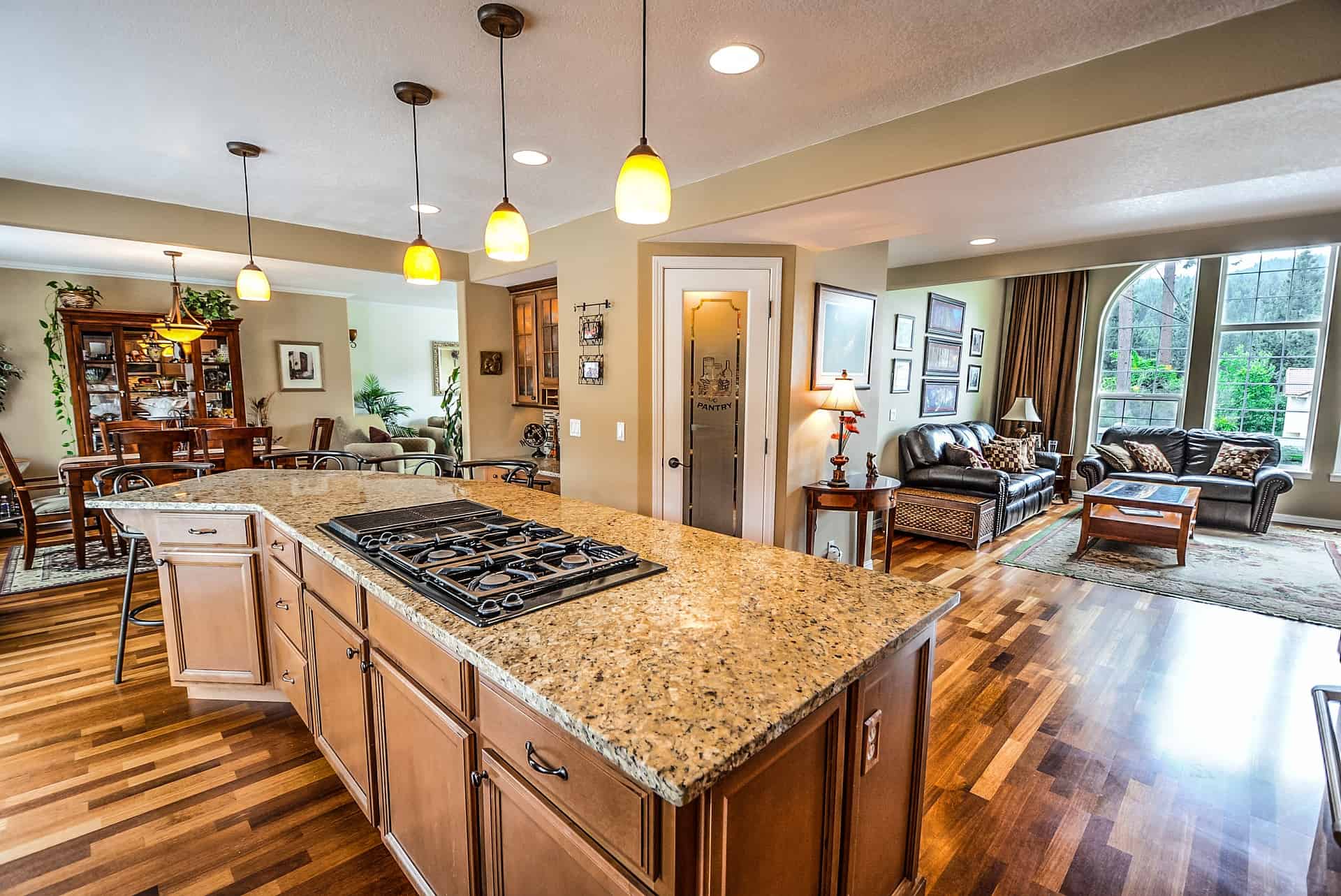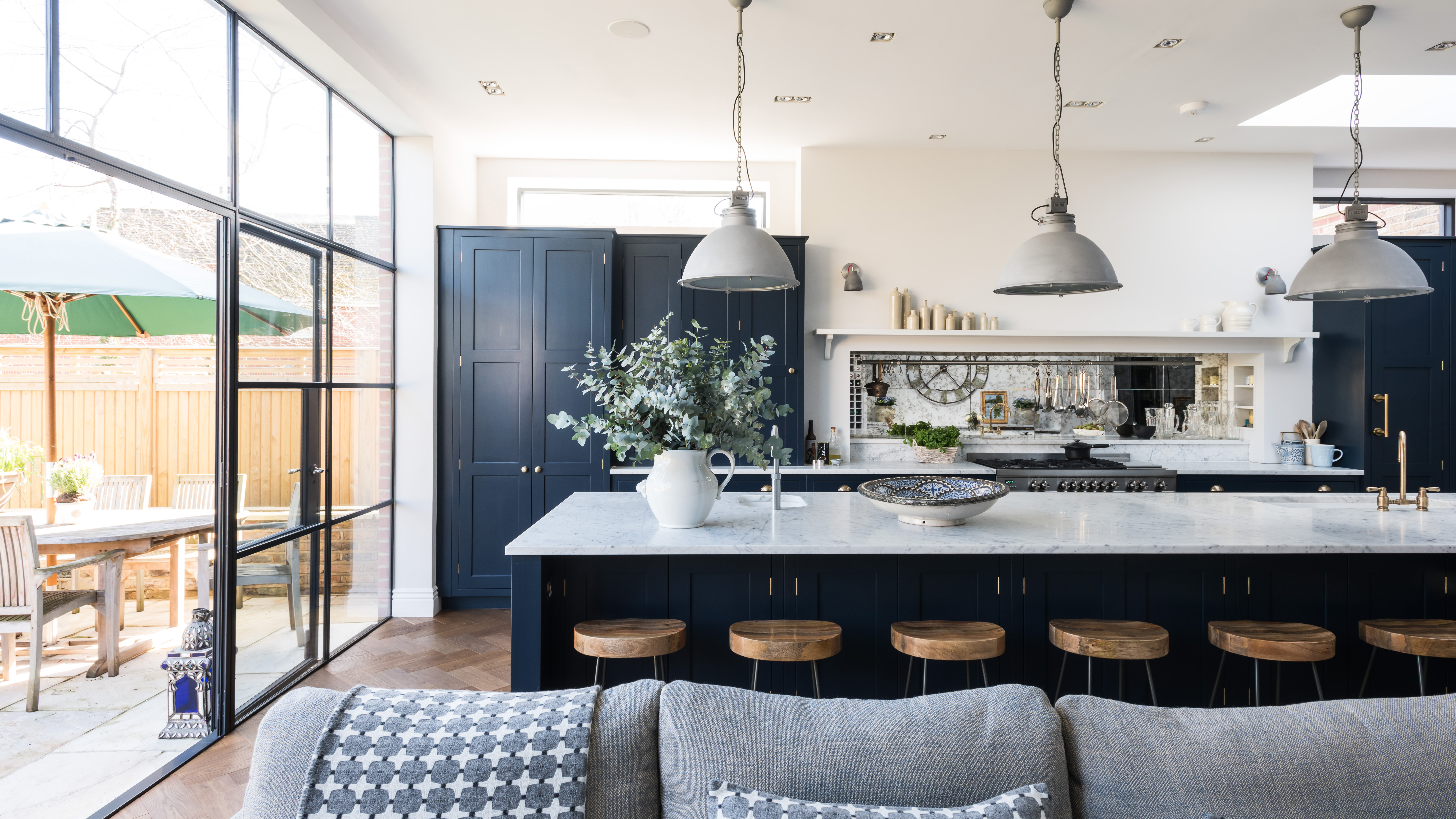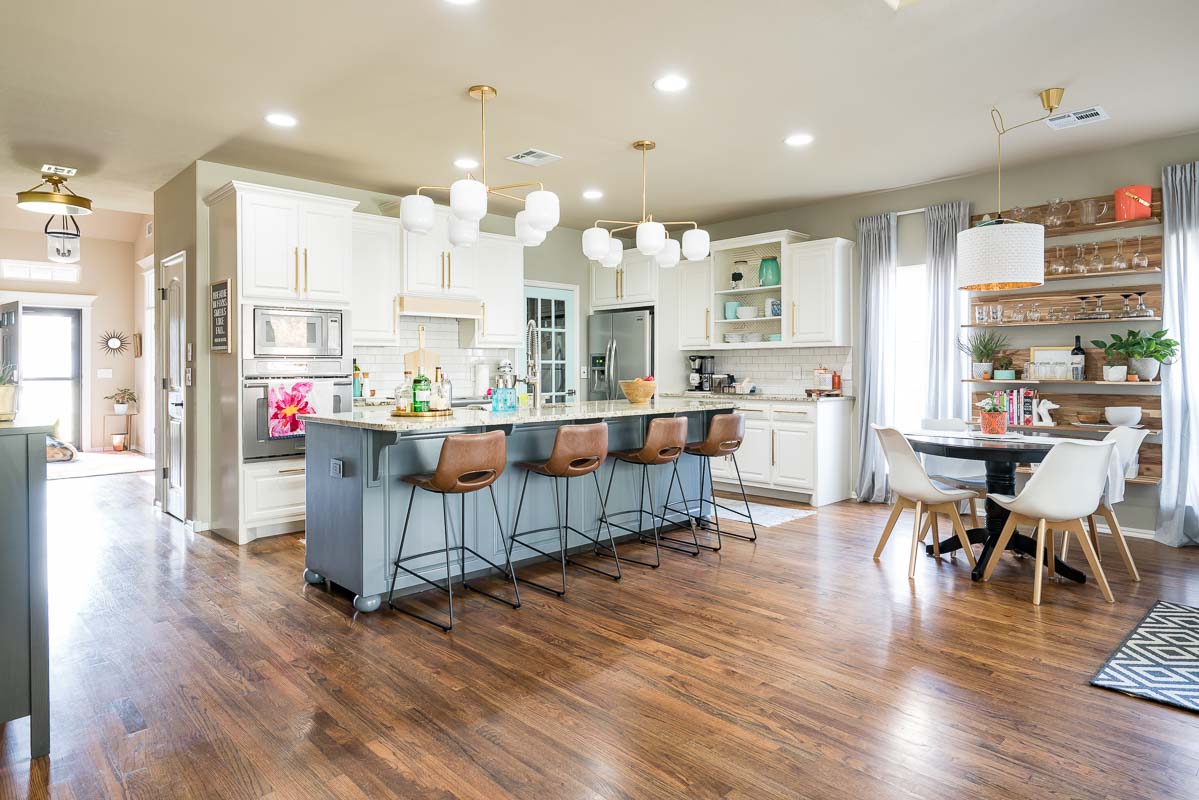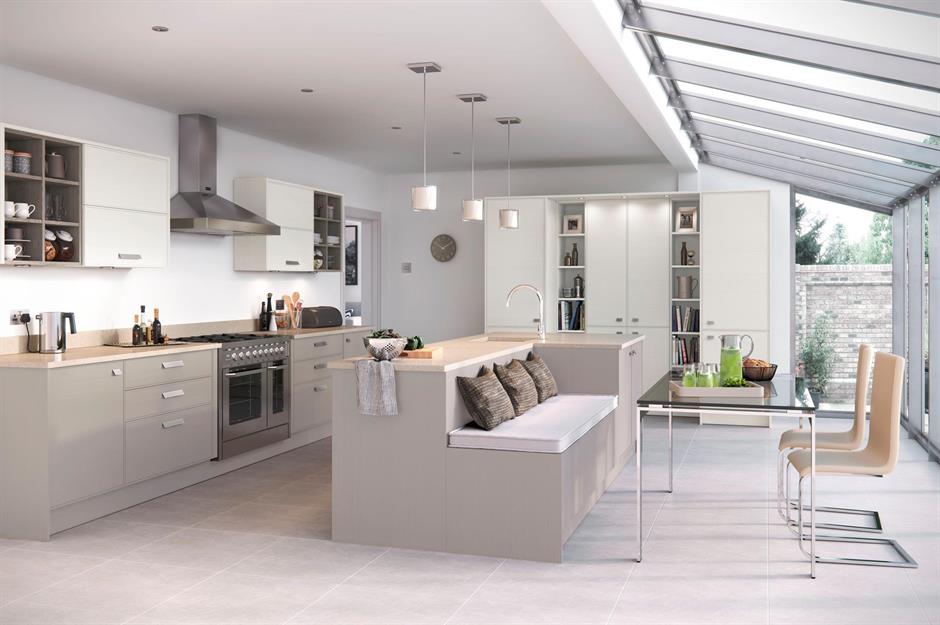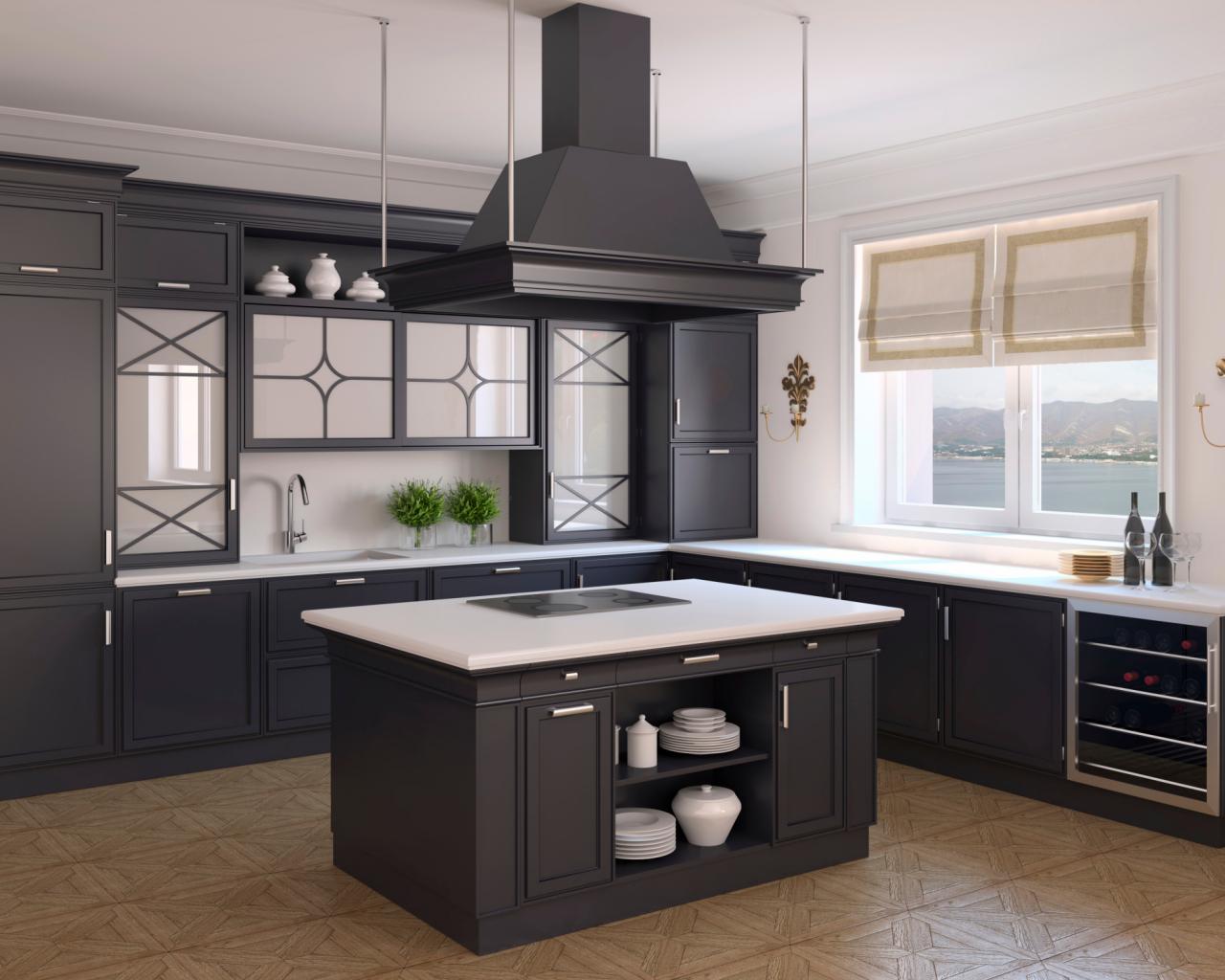The Benefits of an Open Floor Kitchen Layout
Open floor kitchen layouts have become increasingly popular in modern home designs. This trend focuses on creating a spacious and inviting environment that enhances both functionality and aesthetics. Here are some key benefits of an open floor kitchen layout:
- Enhanced Social Interaction: An open floor plan allows family members and guests to interact more freely. Whether you’re cooking, dining, or relaxing in the living area, the lack of walls makes communication easier and more enjoyable. This setup is perfect for entertaining, as it allows the host to engage with guests while preparing meals.
- Increased Natural Light: Removing barriers between the kitchen and adjacent rooms allows natural light to flow more freely throughout the space. This not only makes the kitchen feel brighter and more welcoming but also reduces the need for artificial lighting during the day, which can help lower energy costs.
- Improved Flow and Functionality: An open floor plan creates a more efficient workflow in the kitchen. Without walls to restrict movement, it’s easier to navigate between the cooking, prep, and dining areas. This layout can also make the kitchen feel larger and more spacious, even in smaller homes.
- Versatile Design Options: Open floor plans provide greater flexibility when it comes to designing your kitchen and living spaces. You can experiment with different furniture arrangements, décor styles, and color schemes without being limited by walls or confined spaces. This versatility makes it easier to create a cohesive and harmonious look throughout your home.
- Increased Home Value: Homes with open floor plans are often more desirable to potential buyers. This layout is associated with modern living and can make a property feel more contemporary and upscale. Investing in an open floor kitchen layout can increase the overall value of your home and make it more attractive on the real estate market.
- Better Connectivity with Outdoor Spaces: If your home has access to a patio, deck, or backyard, an open floor plan can enhance the connection between indoor and outdoor living areas. Large windows, sliding glass doors, and other design elements can create a seamless transition, making it easier to enjoy outdoor dining and entertaining.

Incorporating Islands and Breakfast Bars
Kitchen islands and breakfast bars have become essential features in modern kitchen designs. They not only add functionality but also enhance the aesthetic appeal of the space. Here are some tips for incorporating islands and breakfast bars into your kitchen:
Maximize Workspace: One of the primary benefits of a kitchen island is the additional workspace it provides. Whether you need extra room for meal prep, baking, or assembling dishes, an island can offer a convenient surface that’s easily accessible from all sides. Breakfast bars, often integrated into islands, provide a dedicated space for casual dining and can double as a workspace.
Add Storage Solutions: Islands and breakfast bars can be designed with built-in storage options, such as cabinets, drawers, and shelves. This additional storage can help keep your kitchen organized and clutter-free. Consider incorporating features like pull-out trash bins, wine racks, or open shelving for displaying cookbooks and decorative items.
Create a Focal Point: An island or breakfast bar can serve as a focal point in your kitchen, drawing attention and adding visual interest. Choose materials and finishes that complement the overall design of your kitchen. Whether you opt for a sleek, modern look or a more rustic, farmhouse style, the island can enhance the overall aesthetic of the space.
Facilitate Social Interaction: Islands and breakfast bars encourage social interaction by providing a central gathering spot in the kitchen. Guests can sit and chat while you prepare meals, creating a more engaging and interactive experience. This setup is particularly useful for families, as it allows parents to supervise children while cooking.
Enhance Functionality: Incorporating appliances and fixtures into your island can significantly improve the functionality of your kitchen. Consider adding a sink, cooktop, or dishwasher to the island to create a more efficient workflow. Power outlets can also be installed to accommodate small appliances and charging stations for electronic devices.
Optimize Seating Arrangements: Breakfast bars offer a convenient dining option for quick meals and snacks. When designing your island or breakfast bar, consider the type and number of seating you need. Stools or chairs should be comfortable and match the overall style of your kitchen. Ensure there is enough legroom and space for each person to sit comfortably.
Seamless Integration with Living and Dining Areas
Creating a seamless integration between your kitchen, living, and dining areas is essential for an open floor plan. This design approach promotes fluidity and cohesion throughout your home. Here’s how to achieve seamless integration:
Consistent Design Elements: Use consistent design elements across your kitchen, living, and dining areas to create a cohesive look. This can include matching or complementary color schemes, flooring materials, and cabinetry styles. Consistency in design helps to visually connect the spaces and makes the transition between them feel natural.
Unified Flooring: One of the most effective ways to integrate these areas is by using the same flooring material throughout. Whether you choose hardwood, tile, or another option, continuous flooring creates a sense of unity and helps the spaces flow together. Area rugs can be used to define specific zones without disrupting the overall harmony.
Open Sightlines: Ensure that there are clear sightlines between the kitchen, living, and dining areas. This openness allows for better communication and interaction among family members and guests. Avoid placing large furniture or partitions that block the view and create visual barriers.
Coordinated Furniture and Décor: Select furniture and décor that complement each other across the different areas. For example, if your living room features modern furniture with clean lines, choose dining chairs and kitchen stools that match this aesthetic. Coordinated lighting fixtures and decorative accents also contribute to a seamless look.
Multi-Functional Spaces: Design your open floor plan to accommodate multiple functions. For instance, a kitchen island with a breakfast bar can serve as a casual dining area, a workspace, and a place for socializing. Similarly, a dining table can be used for both meals and as a gathering spot for activities and games.
Flexible Layouts: Plan a flexible layout that allows for easy rearrangement of furniture and accessories. This adaptability is especially useful for entertaining or accommodating different activities. Lightweight, modular furniture pieces can be moved around as needed to create the desired flow and functionality.
Maximizing Natural Light in an Open Kitchen
Natural light can transform your kitchen into a bright, inviting space. Maximizing natural light not only enhances the aesthetic appeal but also improves energy efficiency and mood. Here’s how to make the most of natural light in your open kitchen:
Large Windows and Glass Doors: Incorporate large windows and glass doors to allow ample natural light to enter your kitchen. Floor-to-ceiling windows, sliding glass doors, and skylights are excellent options for maximizing light. Position windows strategically to capture sunlight throughout the day.
Open Window Treatments: Choose window treatments that allow light to filter through while providing privacy when needed. Sheer curtains, light-colored blinds, and shades can help diffuse natural light without blocking it completely. Avoid heavy, dark drapes that can make the space feel closed off and dim.
Reflective Surfaces: Use reflective surfaces to bounce light around the room. Glossy finishes on cabinets, countertops, and backsplashes can enhance the brightness of your kitchen. Mirrors and metallic accents also help reflect light, creating a more open and airy atmosphere.
Light Color Palette: Opt for a light color palette to make your kitchen feel brighter and more spacious. Whites, creams, and pastels reflect light better than darker colors, helping to illuminate the space. Consider light-colored cabinetry, countertops, and walls to enhance the overall effect.
Minimalist Design: A minimalist design approach can help maximize natural light by reducing visual clutter. Keep countertops clear, use open shelving sparingly, and choose streamlined furniture to create a clean, uncluttered look. This allows light to flow more freely and makes the space feel more open.
Strategic Lighting: While natural light is essential, it’s also important to supplement it with strategic artificial lighting. Use a combination of ambient, task, and accent lighting to ensure your kitchen is well-lit during all times of the day. Pendant lights, under-cabinet lighting, and recessed lighting can enhance the overall brightness and functionality of the space.
Choosing the Right Furniture for an Open Space
Selecting the right furniture is crucial for creating a functional and aesthetically pleasing open floor plan. The right pieces can enhance the flow and cohesiveness of your kitchen, living, and dining areas. Here are some tips for choosing furniture for an open space:
Scale and Proportion: Choose furniture that is appropriately scaled for your open space. Oversized pieces can overwhelm the area, while too-small furniture can make it feel sparse and uninviting. Consider the size of your rooms and the layout when selecting sofas, dining tables, and chairs to ensure they fit comfortably without obstructing movement.
Coordinated Style: Maintain a consistent style throughout your open floor plan to create a harmonious look. Whether you prefer modern, traditional, or eclectic designs, ensure that your furniture pieces complement each other. Coordinated styles help create a unified and cohesive appearance across different areas.
Multi-Functional Pieces: Opt for multi-functional furniture that can serve multiple purposes. For example, a dining table with extendable leaves can accommodate both everyday meals and larger gatherings. Similarly, a sofa with built-in storage or a coffee table that doubles as a workspace can enhance functionality without compromising on style.
Flexible Seating Arrangements: Incorporate flexible seating arrangements to accommodate different activities and social interactions. Modular sofas, benches, and stackable chairs can be easily rearranged to suit various needs. This flexibility is particularly useful in open floor plans where the living, dining, and kitchen areas are interconnected.
Visual Flow: Ensure that your furniture choices promote visual flow throughout the open space. Low-profile furniture, such as sofas and coffee tables, can create an unobstructed line of sight and make the area feel more spacious. Avoid placing tall, bulky pieces that can block views and create visual barriers.
Comfort and Functionality: While aesthetics are important, comfort and functionality should not be overlooked. Choose furniture that is comfortable and practical for everyday use. Dining chairs with cushioned seats, sofas with supportive cushions, and ergonomic kitchen stools can enhance the overall comfort and usability of your open space.
Color Schemes and Decor Tips for Open Kitchens
The right color scheme and decor can significantly impact the look and feel of your open kitchen. A well-chosen palette can enhance the space’s brightness, cohesion, and overall appeal. Here are some tips for selecting color schemes and decor for open kitchens:
Neutral Base Colors: Start with a neutral base color for your kitchen walls, cabinets, and major furnishings. Whites, grays, and beiges provide a versatile backdrop that can be easily complemented with other colors. Neutral tones also create a sense of openness and make the space feel larger and more inviting.
Accent Colors: Introduce accent colors to add personality and visual interest to your kitchen. Choose a few complementary shades to use in accessories, such as bar stools, kitchen utensils, and decorative items. Bold accent colors, like navy blue, emerald green, or mustard yellow, can create striking contrasts and enhance the overall design.
Cohesive Palette: Ensure that the color scheme of your open kitchen flows seamlessly into the adjacent living and dining areas. Use a cohesive palette that includes similar tones and shades across all spaces. This continuity creates a harmonious look and reinforces the open floor plan concept.
Textural Elements: Incorporate different textures to add depth and dimension to your kitchen decor. Materials like wood, metal, glass, and stone can create interesting contrasts and enhance the overall aesthetic. For example, a wooden dining table, metal light fixtures, and glass cabinet doors can work together to create a visually appealing and cohesive look.
Decorative Lighting: Choose decorative lighting fixtures that complement your color scheme and enhance the overall design. Pendant lights, chandeliers, and sconces can serve as focal points and add character to your kitchen. Select fixtures that match your chosen style and finish to create a cohesive and stylish look.
Personal Touches: Add personal touches to make your open kitchen feel more inviting and unique. Display artwork, family photos, or decorative items that reflect your personality and style. Plants and greenery can also add a natural element and bring life to the space. Personal touches help create a warm and welcoming environment that feels like home.
Creating a Functional and Stylish Open Kitchen
Designing an open kitchen that is both functional and stylish requires careful planning and attention to detail. Balancing practicality with aesthetics can transform your kitchen into a space that meets all your needs. Here’s how to achieve a functional and stylish open kitchen:
Efficient Layout: Plan an efficient layout that optimizes workflow and functionality. The work triangle concept, which positions the sink, stove, and refrigerator in a triangular layout, can enhance efficiency. Ensure there is enough counter space for food preparation and that appliances are easily accessible.
Ample Storage: Incorporate ample storage solutions to keep your kitchen organized and clutter-free. Use cabinets, drawers, and pantry spaces to store kitchen essentials and keep countertops clear. Consider installing pull-out shelves, lazy Susans, and drawer dividers to maximize storage efficiency and accessibility.
Quality Materials: Choose high-quality materials that are both durable and visually appealing. Countertops, flooring, and cabinetry should withstand daily use while adding to the overall aesthetic. Materials like quartz, granite, and hardwood are popular choices for their durability and timeless appeal.
Stylish Fixtures and Hardware: Select stylish fixtures and hardware to enhance the look of your kitchen. Faucets, cabinet handles, and lighting fixtures should complement the overall design and add a touch of elegance. Choose finishes that match your chosen style, whether it’s modern, industrial, or farmhouse.
Integrated Appliances: Integrate appliances seamlessly into the design to create a cohesive and streamlined look. Built-in ovens, refrigerators, and dishwashers can blend into cabinetry, maintaining a clean and uncluttered appearance. Consider panel-ready appliances that match your cabinet fronts for a seamless integration.
Functional Lighting: Ensure that your kitchen is well-lit with a combination of ambient, task, and accent lighting. Pendant lights over the island, under-cabinet lighting for countertops, and recessed lighting for general illumination can create a well-lit and functional space. Dimmable lighting options allow you to adjust the brightness according to different activities and moods.
Open plan kitchen ideas: clever ways to create a hub for you
How to Decorate an Open Floor Plan
Really clever ideas to make open-plan work for everyone
Open Kitchens Concept
Related Posts:
